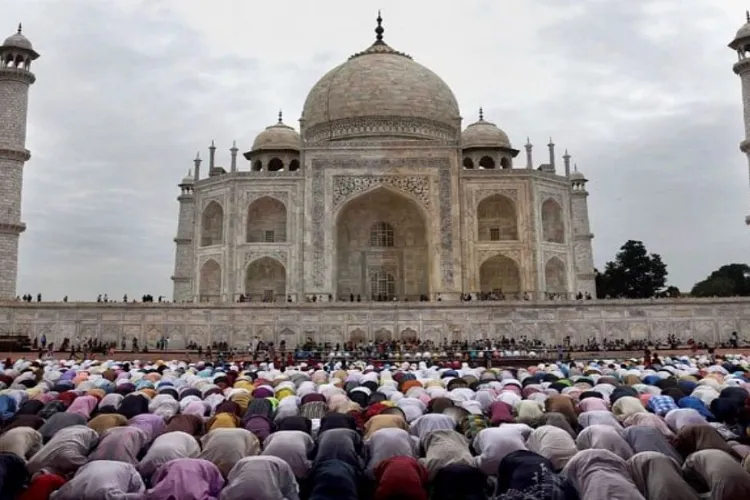
Saquib Salim
Perceptions can be based on opinions but for policymaking, data, numbers, and statistics are indispensable. Till the late 19th century, when the first census was enumerated, people believed that Hindus formed an overwhelming majority in Bengal province. However, the result of the census contradicted this. These findings led to a change in the way the colonial rulers governed India.
Likewise, today there is a perception that Muslims are economically backward in the most populous state of India, Uttar Pradesh. However, rarely do we find the numbers supporting this belief. Recently, when my editor asked me what was the extent of economic backwardness among the Muslims in Uttar Pradesh, I did not know the answer. I decided to go to the 6th Economic Census Report, the latest to be published. The census was carried out in 2013, and the next report is yet to be submitted. The Report, I read, contradicted many of my beliefs.
The census recorded more than 60 lakh privately-owned independent economic entities in the state. Of these, 21.62% belong to the agricultural sector, 78.38% to the non-agricultural sector, 62.22% are situated in rural areas, and 37.78% in urban areas. Crop and animal production, hunting, forestry, fishing, aquaculture, and related activities constitute the agriculture sector. The non-agriculture sector comprises mining, quarrying, manufacturing, waste management, water supply, construction, repair of motorized vehicles, retail, transportation, food services, information, and communication, etc.
The state, according to the 2011 census, has a 19.26% Muslim population and I read their representation in the economic activities against this figure. The largest sector to employ people in U.P is the non-agricultural sector. There are 46,79,063 registered entities in this sector, which employ 92,01,047 people. 79.34% of entities are self-employed people registered as units. Of these, 12,07,742 entities are owned by Muslims. This brings their proportion to 25.81% of the sector. These entities include self-employed people like mechanics, retailers, cottage industries, small-scale industries, and other privately owned establishments. 23,86,870, or 25.94% of the total workforce employed in the sector, are employed through entities owned by Muslims.
Also read: Higher education among Muslims shows a positive trend
Though, the numbers do not bring out the qualitative analysis of these economic entities but still quantitatively, representation of 25.81%, 6.55 percentage points more than the proportion in the population, is against the commonly held belief. In the urban area, the representation of Muslim-owned entities in the sector jumps to 31.88% while 20.22% of the rural areas-based economic entities are Muslim-owned.
The agricultural sector has 14,12,067 privately owned economic entities, which employ 26,60,306 people. Muslims own only 11.27% of these entities, which is much below their proportion in the population. The self-employment rate is 94.59% in this sector. If we look at the rural-urban divide, in the urban area-based agricultural sector economic activities, 23.45% are owned by Muslims while ownership drops to 10.59% in rural areas.
.webp)
In the non-agricultural sector, one of the mainstays of the U.P. economy is handicrafts, handlooms, and other handmade articles. Sarees of Varanasi, brass work of Moradabad, woodcraft of Saharanpur, embroidery of Lucknow, etc are famous and bring a unique identity to the state. In this sector, 3,01,517 people own units, of which 1,97,633, or 65.55%, are owned by Muslims.
The hub of sarees, Varanasi has 26,799 units of which 77.36% are Muslim-owned. Lucknow, which is famous for chikan embroidery, has 79.73% Muslim-owned handicraft units out of 17,082. Bareilly and Moradabad have 82.87% and 88.51% Muslim-owned units respectively.
Saharanpur, famous for its woodcrafts, and Aligarh, famous for locks, are two important centers where Muslims are less than a majority in handicrafts. These two centers have 44.39% and 31.37% Muslim-owned units respectively.
A surprise in the report is regarding the female representation in the economy. Though at 1,62,981, female entrepreneurs constitute only 2.66% of the total economic establishments in the state, the fact that Muslim women constitute 30.03% of them is encouraging. The data proves that the women of the community are on the right track, and a little encouragement will open the doors of a bright future.
The census brings out a point, which we all know. Muslims are lagging in the field of education, science, and technology. In the education sector, out of 4,83,705 units, Muslims own 9.19% while in science and technology, Muslims own 9.81%. In repairing and selling parts of automobiles Muslims owned units are 29.47%.
The report is encouraging that Muslims have a good representation in entrepreneurship, business, and handicrafts. Muslim women are also moving ahead at a rate faster than other groups. But, the report reiterates the need of imparting education, science, and technology among Muslims.
(Saquib Salim is a writer and a historian.The data is extracted from the 6th Economic Census Report)
